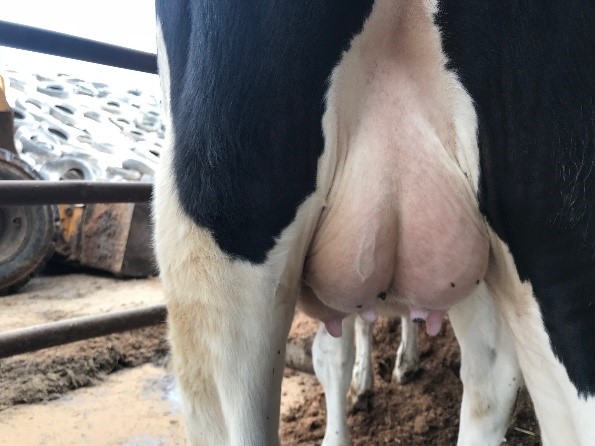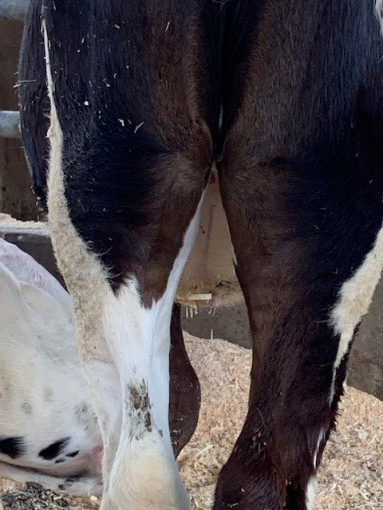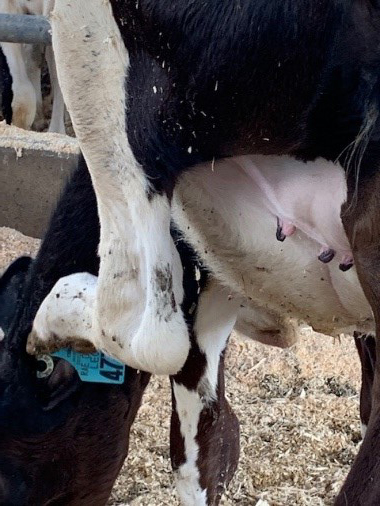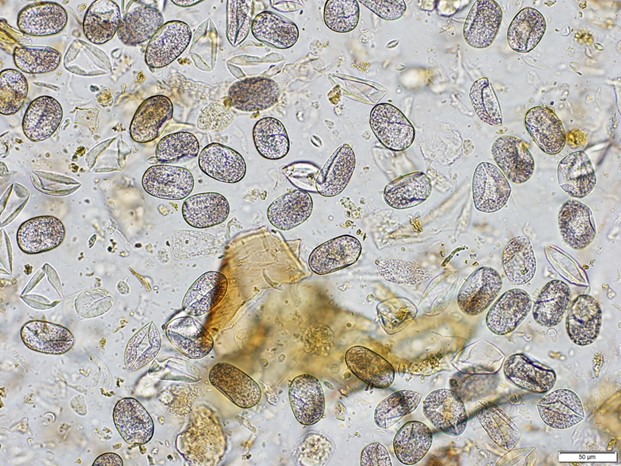Strongyloides papillosus
A new differential for sudden death in weaned calves and lambs
Background
- The AHDC has confirmed two outbreaks of sudden death in weaned dairy calves in western New York associated with the nematode, Strongyloides papillosus.
- While S. papillosus is known to cause clinical signs of ill thrift and diarrhea in young ruminants, these are the first reports in the United States describing its association with sudden death in weaned calves raised in confinement housing.
- Researchers from Japan were the first to link S. papillosus hyperinfection to sudden death in weaned calves and lambs.
- No distinct clinical signs other than fatal arrhythmias were reported by Japanese researchers and they hypothesize the arrhythmias to be secondary to a toxin produced by the adult female worm in the doudenum.
Clinical Signs
- Sudden death of apparently healthy 3-4 month old calves, often found dead.
- Observed deaths are rare and occur over just a few minutes, characterized by sudden onset of tachycardia, tachypnea, vocalization, and convulsions leading to death.
- Dramatic precocious udder enlargement secondary to mammary gland congestion and mild ductal hyperplasia often precedes sudden death in heifers by several days to weeks. Apparently healthy cohorts with enlarged mammary tissues should be considered infected. This udder enlargement has not been reported in suspect small ruminants and cervid cases.

|

|

|
Transmission and Environmental Risk Factors
- In general, S. papillosus is transmitted to a host via percutaneous or oral mucosal penetration by the infective larvae (L3) present in the soil or bedding.
- Offspring can also be infected by activation of encysted L3 in the tissues of a dam that are shed in milk/colostrum post-parturition
- High environmental temperatures and humidity hasten development of eggs in soil to infectious L3 in as little as 28 hours, thereby facilitating continuous infection (hyperinfection) of the ruminant host.
- Sawdust bedding has been a common variable in all reported S. papillosus outbreaks in Japan and New York State, likely because this bedding traps humidity and provides an ideal environment for larval development. Other GI nematodes are not expected to amplify in sawdust bedding or bedded packs.
Life Cycle Highlights
- S. papillosus has both a free-living and intra-host lifecycle.
-
Intra-host life cycle:
- L3 stage larvae can infect the ruminant host percutaneously or through the oral mucosa, then migrate to the duodenum, where they mature into parthenogenic egg-producing adult females. This pre-patent period is approximately 9 days.
-
Free-living life cycle:
- L3 stage larvae can mature to adult male and female worms in the environment, who then produce eggs through sexual reproduction.
- Transmammary transmission of S. papillosus L1 larvae to neonatal offspring occurs through colostrum and milk during early lactation.
Diagnostics
Ante-mortem:
- Fecal examination to detect larvated eggs 40-50um in diameter. Fecal floatation is not 100% sensitive and could be negative in a clinical case. In acute death cases under high suspicion for S. papillosus infection, fecal samples should also be collected from cohorts to increase the chance of making a diagnosis.
- Precocious udder development precedes sudden death and has been an important clue in herd investigations of sudden death in weaned calves caused by S. papillosus.

Post-mortem:
- Aside from udder enlargement secondary to congestion, there are often no gross abnormalities post-mortem.
- Feces or colon contents examined by fecal floatation test.
- Submit chilled, several feet of proximal duodenum to AHDC Parasitology for detection and identification of adult female S. papillosus (do not freeze).
Treatment
- Doramectin pour-on in bovine calves has been successfully used for treatment of infected calves in published reports and in two NY State outbreaks.
- Deaths stopped within 24 hours and mammary enlargement decreased dramatically to near normal appearance by 7 days post-deworming with Doramectin pour-on in the two NY State outbreaks.
Prevention
- Increased hygiene to frequently remove and replace all existing sawdust bedding is recommended during conditions of high temperature and humidity.
- Fecal egg count monitoring during months of high temperature and humidity (late summer into early fall).
There remain many unanswered questions regarding the pathophysiology of sudden death in S. papillosus infected calves. Strongyloides papillosus is sometimes considered a minor pathogen of little concern to domestic ruminants, especially when fecal testing detects low counts of ova. Detection in a herd or flock, especially when unexplained mortalities of young stock are occurring may be highly significant. Please contact AHDC Veterinary Support Services with any additional questions (607) 253-3900.
For more information, click here to access the following reference:
Strongyloides papillosus causes sudden death in weaned calves on New York dairies
DOI: https://doi.org/10.2460/javma.21.09.0424
Toby L. Pinn DVM (tlp52@cornell.edu)1, Amber M. Forrestal DVM2, Gerald E. Duhamel DVM, PhD3, Esther E. Crouch DVM, MVS4, Belinda S. Thompson DVM1, and Manigandan Lejeune PhD1
1Animal Health Diagnostic Center, College of Veterinary Medicine, Cornell University, Ithaca, NY
2Perry Vet, Perry, NY
3Department of Biomedical Sciences, College of Veterinary Medicine, Cornell University, Ithaca, NY
4Charles River Laboratories International Inc, Wilmington, MA
VSS-WEB-093-V02


